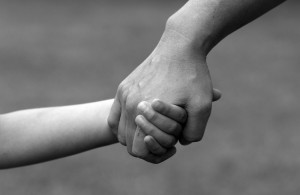A child is a work in progress. This means that he or she is vulnerable and deserves special attention as well as special protection, according to one of the guiding principles of the Convention on the Rights of the Child (‘CRC’). Article 3 of the CRC stipulates that the best interests of the child must be the primary concern in making decisions that may affect them.
Other articles of the CRC concern the protection of children. Here, UNICEF is referring to prevention as well as to combating violence, exploitation, and all kinds of abuse and ill-treatment, including sexual exploitation for commercial purposes, child labour, and harmful traditional practices such as female genital mutilation/excision and child marriage.
The protection of children is a duty of parents, communities, and nations. Governments must institute and guarantee an effective protective environment. This includes a legal framework, but laws alone are not enough. Also required are a system of procedures and special institutions, trained and competent personnel such as magistrates and judges, police and social workers and so on. Their role is to ensure that children’s rights are respected and that parents respect the duties they owe their children. Measures both to prevent and to restrain are involved.
Sanctions are therefore specified against any person who is guilty of infringing these rules or of undermining children’s rights in any way.
Governments also step in when parents cannot fulfill their role, whether because they mistreat their children or because they die. Then a child can be placed in care or with a foster family.
The protection of children is indicated in situations that put children in danger, that harm their health and wellbeing, and also when children suffer discrimination, for example, because they are disabled, come from an indigenous or minority background and so on). The protection of childhood applies to the daily lives of children in the context of peace and also in times of emergency and crisis, including natural disaster and war. Then, protection consists also of preventing abuse and mistreatment. In terms of prevention, the importance of providing basic services to families has been demonstrated. Access to healthcare, to education, and to basic needs reduces the temptation to practices that are harmful to the welfare of children.
More : Understanding the right to protection
https://www.humanium.org/en/fundamental-rights/protection
https://www.humanium.org/en/world/right-to-protection/
Sources :
http://www.unicef.org/protection/files/What_is_Child_Protection.pdf


